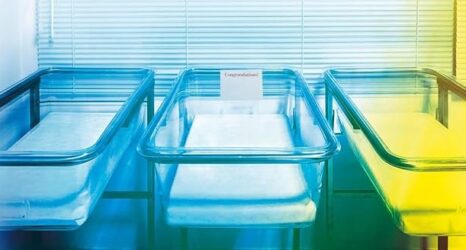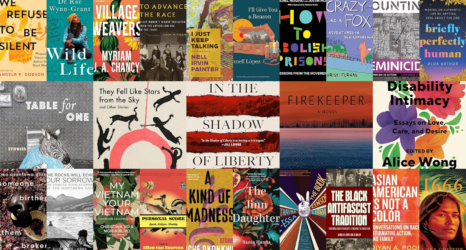In the early 1960s, when Sally Ride was a child, her parents gave her a chemistry set and a subscription to Scientific American. They got her a microscope and a telescope, too, and so, from an early age, she learned to ask questions about the universe and her place within it. Along with the other students in her sixth-grade science class, she watched John Glenn orbit planet Earth. From her early experiments, Ride’s thirst for knowledge grew, supported by parents and teachers. In large part because of the encouragement and opportunities she received in her formative years, she went on to become America’s first woman astronaut and an international hero.
A new book, Sally Ride: A Photobiography of America’s Pioneering Woman in Space, written for young readers by Ride’s surviving life partner, Tam O’Shaughnessy, shares stories and images with the intention of inspiring a new generation to imagine their futures in science. The book’s release was timed to coincide with last week’s announcement by the Smithsonian National Air and Space Museum of the acquisition of the Sally K. Ride Collection, a gift from O’Shaughnessy. In the generously illustrated photobiography, written in language accessible to readers of all ages, you can trace the steps that led to Ride’s personal and professional choices; the museum now houses many of the actual artifacts, including her NASA space helmet, flight jacket and other items from her life as an astronaut, physicist, university professor and tennis player (here‘s her first tennis racket, and here‘s her in-flight suit from the first outer-space voyage).
What Sally Ride the book strives to make clear is that Ride’s childhood and schooling contributed directly to her love of science, which in turn led her to study physics, then to go for a Ph.D. and, as she was completing her dissertation, to apply to be part of NASA’s first class of female astronauts.
When Ride started tenth grade, the all-girls’ high school she attended had only just begun to offer science courses and, O’Shaughnessy reports, “it was the first year that trigonometry and calculus were taught.”
People were just starting to realize that girls liked, and excelled in, science and math just as boys did.
As an undergraduate at Stanford, Ride majored in physics and English, witnessing first-hand the gender divisions in each field. Whereas in English, nearly half of the majors were female, there were only four women among the 24 physics majors. Those gender disparities would show up in the applicant pool when NASA sent out to the historic call for astronauts that led to Ride’s selection. Here’s how the numbers stacked up, as highlighted in Sally Ride.
Number of applicants NASA received: 8,079
Number of applications from women: 1,251
Number of finalists: 208
Number of women finalists: 21
Number chosen to become astronauts: 35
Number of women chosen: 6
Ride defied these odds and then worked harder than she had ever worked in her life to succeed in the astronaut training program.
In the late 1970s, the burgeoning feminist movement was the wind beneath Ride’s wings. Without feminism and discussions of expanding women’s roles in society, NASA would not have opened its search to female candidates. During her flight training, Ride purchased a bumper sticker that declared, “A WOMAN’S PLACE IS IN THE COCKPIT.” Her mother read Ms. magazine, and was no doubt pleased that Ms. was among the numerous publications that featured Ride on their covers when NASA announced that she would be the first American woman to go in outer space (Russian astronaut Valentina Tereshkova became the first woman in space in 1963).
Perfectly reflecting the spirit of the times, People magazine’s cover bore the caption, “Fed up with those dumb chauvinist questions, America’s first woman in space is ready to prove herself.” O’Shaughnessy includes some of the “silly questions” Ride was asked by reporters at the news conference NASA held when her selection was announced, along with Ride’s replies.
“Do you cry when you are under pressure?”
“Why doesn’t anyone ask Rick [Frederick Hauck, one of the other astronauts] that question?” Sally wondered out loud.
“Are you going to wear a bra in space?”
“There’s no sag in space,” Sally replied.
“How will you handle your period in space?
Glare. No reply….
Afterward she added, “It’s too bad our society isn’t further along and this is such a big deal. It’s time we realized that women can do anything they want to.”
O’Shaughnessy deftly condenses Ride’s story and retells it in clear language, placing a fitting emphasis on the landmark astronaut years. One of the book’s greatest strengths, however, is the author’s personal point of view. “This is the story of Sally Ride’s life and my part in it,” O’Shaughnessy declares in the preface. In that sense, it’s a love story, conveyed within a narrative of exceptional heroism. We learn of Ride’s surprise when she fell in love with a woman in college: “Sally didn’t have a clue what it meant….At that time, society viewed being gay as wrong.”
Having met when they were adolescents, O’Shaughnessy and Ride were lifelong friends who fell in love in 1985, and they were together until Ride’s death from pancreatic cancer in 2012. Together, the couple shared a passion for getting children “hooked on science.” They wrote a series of kids books, and the pictures of storyboards included in Sally Ride allow us to see the collaborative writing process that led to these creations. They started Sally Ride Science together because, writes O’Shaughnessy, “We wanted to show young people (and their parents and teachers!) that science is fascinating, creative and fun; and that the women and men working in science are regular people who come from all walks of life.”
Ride came up with the idea of putting a digital camera, the EarthKAM, on the space shuttle so that students in classrooms could capture images of our planet. After her death, the camera was renamed the Sally Ride EarthKAM. Ride believed that the path to student success—and particularly to girls’ success—in sciences was to inspire curiosity, to encourage that questioning spirit that is the basis of scientific inquiry.
Early exposure to the sciences helped make Ride who she was. For girls, this kind of education can be transformative, and Sally Ride is the perfect gift for the young people and parents in your life.
To paraphrase French feminist Simone de Beauvoir, one is not born, but rather becomes a scientist. Let a girl look through a telescope, and she may reach for the stars.





